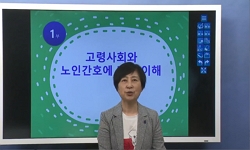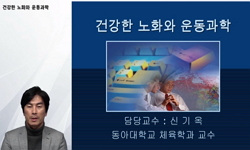자가부식 상아질 접착제의 중합 후 시간 경과에 따른 접착강도의 변화를 관찰하고, 중합률의 영향을 평가하고자 하였다. 36개의 상하악 대구치를 Single Bond (SB. 3M ESPE, USA), Clearfil SE Bond (SE, Kura...
http://chineseinput.net/에서 pinyin(병음)방식으로 중국어를 변환할 수 있습니다.
변환된 중국어를 복사하여 사용하시면 됩니다.
- 中文 을 입력하시려면 zhongwen을 입력하시고 space를누르시면됩니다.
- 北京 을 입력하시려면 beijing을 입력하시고 space를 누르시면 됩니다.

자가부식 접착제의 미세인장접착강도에 대한 시효처리 효과 = AGING EFFECT ON THE MICROTENSILE BOND STRENGTH OF SELF-ETCHING ADHESIVES
한글로보기https://www.riss.kr/link?id=A35491748
- 저자
- 발행기관
- 학술지명
- 권호사항
-
발행연도
2006
-
작성언어
Korean
- 주제어
-
KDC
515.12
-
등재정보
KCI등재
-
자료형태
학술저널
- 발행기관 URL
-
수록면
415-426(12쪽)
-
KCI 피인용횟수
3
- DOI식별코드
- 제공처
-
0
상세조회 -
0
다운로드
부가정보
국문 초록 (Abstract)
자가부식 상아질 접착제의 중합 후 시간 경과에 따른 접착강도의 변화를 관찰하고, 중합률의 영향을 평가하고자 하였다. 36개의 상하악 대구치를 Single Bond (SB. 3M ESPE, USA), Clearfil SE Bond (SE, Kuraray,Japan) , Xeno-Ⅲ (ⅩⅢ, Dentsply, Germany) , 및 Adper Prompt (AP 3M ESPE, USA)를 적용하는 4군으로 나누고, 이를 다시 미세인장접착강도 측정 시점에 따라 22℃의 증류수에 보관 후 48시간에 측정한 군과 7일 후 측정한 군, 및 접착된 시편을 5000회 열순환을 시행하고 측정한 군으로 나누었다. 모래시계 형태의 접착시편을 제작하여 만능시험기 (Model 4466 ; Instron Co., USA)로 1 mm/min의 하중속도 하에서 미세인장접착강도를 측정하였다. 접착제의 중합률은 Fourier 변환 적외선 분광법을 이용하여 중합 직후, 48시간, 1주일에 측정하였으며, 주사전자현미경을 이용하여 파절 단면을 관찰하였다. 미세인장접착강도와 중합률 모두 시간의 경과에 따라 유의한 증가를 보였으며, 시간 경과와 재료간에 교호작용이 있었다 (미세인장접착강도, 2-way ANOVA, p = 0.018; 중합률, Repeated Measures ANOVA, p ( 0.001). ⅩⅢ와 AP의 낮은 미세인장접착강도는 낮은 중합률 때문임을 확인할 수 있었다. 48시간 이후에 SE와 AP에서 접착강도가 증가 되는 것은 중합률과는 관련이 없고, 전자현미경에서 관찰되는 접착제층의 성숙에 따른 취성의 증가가 원인일 가능성이 제기된다.
다국어 초록 (Multilingual Abstract)
In this study, the changes in the degree of conversion (DC) and the microtensile bond strength (MTBS) of self-etching adhesives to dentin was investigated according to the time after curing. The MTBS of Single Bond (SB, 3M ESPE, USA), Clearfil SE Bond...
In this study, the changes in the degree of conversion (DC) and the microtensile bond strength (MTBS) of self-etching adhesives to dentin was investigated according to the time after curing. The MTBS of Single Bond (SB, 3M ESPE, USA), Clearfil SE Bond (SE, Kuraray, Japan), Xeno- Ⅲ (ⅩⅢ, Dentsply, Germany), and Adper Prompt (AP, 3M ESPE, USA) were measured at 48h, at l week and after thermocycling for 5,000 cycles between 5℃ and 55℃. The DC of the adhesives were measured immediately, at 48h and at 7 days after curing using a Fourier Transform Infra-red Spectrometer. The fractured surfaces were also evaluated with scanning electron microscope. The MTBS and DC were significantly increased with time and there was an interaction between the variables of time and material (MTBS, 2-way ANOVA, p = 0.018; DC, Repeated Measures ANOVA, p < 0.001). The low DC was suggested as a cause of the low MTBS of self-etching adhesives, XⅢ and AP, but the increase in the MTBS of SE and AP after 48h could not be related with the changes in the DC. The microscopic maturation of the adhesive layer might be considered as the cause of increasing bond strength.
참고문헌 (Reference)
1 "vivo and in vitro permeabilityof one step self etch adhesives" 83 : 459-464, 2004
2 "too hydrophilic?Review" 69 : 726-731, 2003
3 "Two year composite dentin bondstability" 14 : 141-144, 2001
4 "Thermal cycling procedures forlaboratory testing of dental restorations" 27 : 89-99, 1999
5 "Theeffect of depth of dentin demineralization on bondstrengths and morphology of the hybrid layer" 25 : 186-194, 2000
6 "The promo-tion of adhesion by the infiltration of monomers intotooth substrates" 265-273, 1982
7 "The overwet phenomenon in two component acetone based primers containing aryl amine and carboxylic acid monomers" 13 : 118-127, 1997
8 "The influence of age and depth of dentinon bonding" 241-246, 1994
9 "The effects ofadhesive thickness on polymerization contraction stressof composite" 79 : 812-817, 2000
10 "The effect of lightcure time of adhesive resinon the thickness of the oxygen inhibited layer and themicro tensile bond strength to dentine" 78 (78): 115-123, 2006
1 "vivo and in vitro permeabilityof one step self etch adhesives" 83 : 459-464, 2004
2 "too hydrophilic?Review" 69 : 726-731, 2003
3 "Two year composite dentin bondstability" 14 : 141-144, 2001
4 "Thermal cycling procedures forlaboratory testing of dental restorations" 27 : 89-99, 1999
5 "Theeffect of depth of dentin demineralization on bondstrengths and morphology of the hybrid layer" 25 : 186-194, 2000
6 "The promo-tion of adhesion by the infiltration of monomers intotooth substrates" 265-273, 1982
7 "The overwet phenomenon in two component acetone based primers containing aryl amine and carboxylic acid monomers" 13 : 118-127, 1997
8 "The influence of age and depth of dentinon bonding" 241-246, 1994
9 "The effects ofadhesive thickness on polymerization contraction stressof composite" 79 : 812-817, 2000
10 "The effect of lightcure time of adhesive resinon the thickness of the oxygen inhibited layer and themicro tensile bond strength to dentine" 78 (78): 115-123, 2006
11 "Tensile properties of resin infiltrated demineral ized human dentin" 74 : 1093-1102, 1995
12 "Staehle HJInfluence of different etching times on hybrid layer for mation and tensile bond strength" 11 : 202-206, 1998
13 "Single step adhesives are permeablemembranes" 30 : 371-382, 2002
14 "Short and Long termbonding efficacy of a self etching one step adhesive" 5 : 41-45, 2003
15 "Shear bond strengths of six bonding systems using thepushout method of in vitro testing" 23 : 69-76, 1998
16 "Permeabilityof dentin to adhesive agents" 618-631, 1993
17 "Nominal shear or fracture mechanics inthe assessment of compositedentin adhesion?" 79 : 41-48, 2000
18 "No bottle vs multi bottle dentin adhesives a microten sile bond strength and morphological study" 17 : 373-380, 2001
19 "Nanoleakage leakage within thehybrid layer" 20 : 18-25, 1995
20 "Mode of failure inthe dentin adhesive resin resin composite bonded jointas determined by strength based TBS and fracture based CNSB mechanical testing" 17 : 201-210, 2001
21 "Microtensilebond strength of eleven contemporary adhesives toenamel" 16 : 329-334, 2003
22 "Microtensilebond strength of eleven contemporary adhesives todentin" 3 : 237-245, 2001
23 "Microtensile bond strengths of one and two step self etch adhesives tobur cut enamel and dentin" 16 : 414-420, 2003
24 "Micromorphological changes in resindentin bonds after1 year of water storage" 63 : 306-311, 2002
25 "Long term durability of dentin bonds made with a self etching primer" 78 : 906-911, 1999
26 "Interpretation of bond failurethrough conversion and residual solvent measurementsand Weibull analyses of flexural and microtensile bondstrengths of bonding agents" 21 (21): 354-364, 2005
27 "Interfacial morphology and strengthof bonds made to superficial versus deep dentin" 8 : 297-302, 1995
28 "Influence of self etching primer drying time onenamel bond strength of resin composites" 27 : 203-207, 1999
29 "In vivo degradation of resin-dentin bonds inhumans over 1 to 3 years" 79 : 1385-1391, 2000
30 "Have dentin adhesives become" 31 (31): 2006
31 "Function of the hybrid zone as astress absorbing layer in resin dentin bonding" 26 : 733-738, 1995
32 "Fourier transform infraredanalysis of degree of polymerization in unfilled resins -methods comparison" 1093-1095, 1984
33 "Failure mechanisms at the hymandentin-resin interface" Lin C 1037-1047, 1994
34 "Factors contributing to the incompatibility between simplified stepadhesives and chemically cured or dualcured composites" 5 : 267-282, 2003
35 "Enamel and dentin bond strengths of single applicationbonding systems" 14 : 361-366, 2001
36 "Effects of two amine reducingagents on the degree of conversion and physical prop-erties of an unfilled light-cured resin" 246-251, 1993
37 "Effects of the acetone content ofsingle solution dentin bonding agents on the adhesivelayer thickness and the microtensile bond strength" 20 : 107-115, 2004
38 "Effect ofsmear layers on the bonding of a self etching primer todentin" 2 : 99-116, 2000
39 "Effect ofadditional coating of bonding resin on the microtensilebond strength of self etching adhesives to dentin" 31 : 103-112, 2006
40 "Effect of a sodium hypochlorite gel on dentinbonding" 16 : 311-323, 2000
41 "Degree of conversion of composites measured by DTAand FTIR" 17 : 178-183, 2001
42 "Degradation patterns of different adhesives and bonding procedures" 66 : 324-330, 2003
43 "Comparison of shear andflexural bond strength tests versus failure modes ofdentin bonding systems" 14 : 297-303, 2001
44 "Bond strengths of conventional and simplified bondingsystems" 11 : 114-117, 1998
45 "Assessment by nano-indentation of the hardness and elasticity of the resin-dentin bonding area" 1434-1442, 1993
46 "Adverse surface interactions between one bottlelight cured adhesives and chemical cured composites" 17 : 542-556, 2001
47 "A challenge to the conventionalwisdom that simultaneous etching and resin infiltration always occurs in selfetch adhesives" 26 : 1035-1042, 2005
동일학술지(권/호) 다른 논문
-
법랑질 변연으로 이루어진 복합레진 수복물의 체적과 C-factor가 미세누출에 미치는 영향
- 대한치과보존학회
- 구봉주
- 2006
- KCI등재
-
법랑모세포 분화와 법랑질 형성과정에서 OD314, Apin protein의 발현 및 기능
- 대한치과보존학회
- 박종태
- 2006
- KCI등재
-
Effects of occlusal load on the cervical stress distribution
- 대한치과보존학회
- Lee, Hyeong-Mo
- 2006
- KCI등재
-
- 대한치과보존학회
- Son, Chang-Yong
- 2006
- KCI등재
분석정보
인용정보 인용지수 설명보기
학술지 이력
| 연월일 | 이력구분 | 이력상세 | 등재구분 |
|---|---|---|---|
| 2027 | 평가예정 | 재인증평가 신청대상 (재인증) | |
| 2021-01-01 | 평가 | 등재학술지 유지 (재인증) |  |
| 2018-01-01 | 평가 | 등재학술지 선정 (계속평가) |  |
| 2017-12-01 | 평가 | 등재후보로 하락 (계속평가) |  |
| 2013-01-01 | 평가 | 등재 1차 FAIL (등재유지) |  |
| 2010-01-01 | 평가 | 등재학술지 유지 (등재유지) |  |
| 2008-01-01 | 평가 | 등재학술지 유지 (등재유지) |  |
| 2005-01-01 | 평가 | 등재학술지 선정 (등재후보2차) |  |
| 2004-01-01 | 평가 | 등재후보 1차 PASS (등재후보1차) |  |
| 2003-01-01 | 평가 | 등재후보학술지 유지 (등재후보1차) |  |
| 2002-01-01 | 평가 | 등재후보학술지 유지 (등재후보1차) |  |
| 2000-07-01 | 평가 | 등재후보학술지 선정 (신규평가) |  |
학술지 인용정보
| 기준연도 | WOS-KCI 통합IF(2년) | KCIF(2년) | KCIF(3년) |
|---|---|---|---|
| 2016 | 0.25 | 0.25 | 0.21 |
| KCIF(4년) | KCIF(5년) | 중심성지수(3년) | 즉시성지수 |
| 0.21 | 0.19 | 0.448 | 0.1 |




 RISS
RISS






